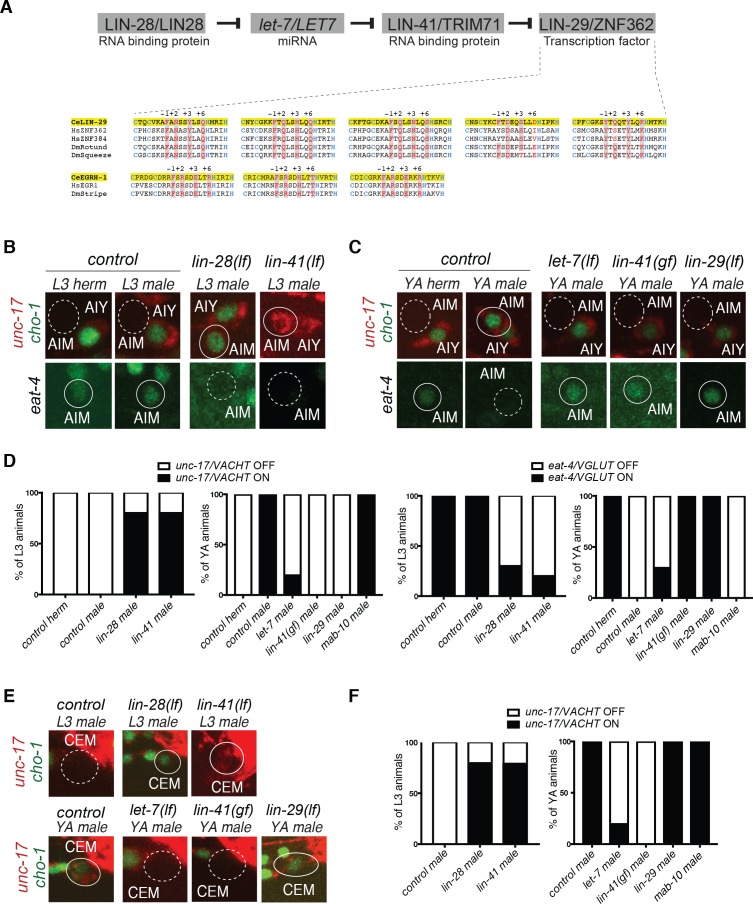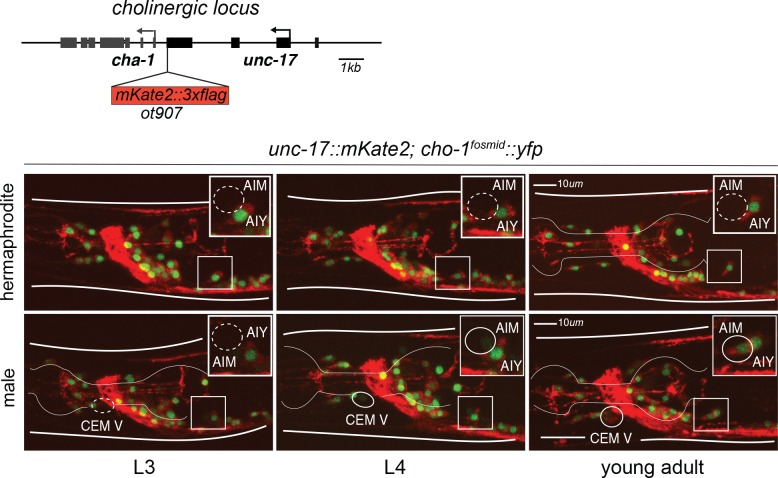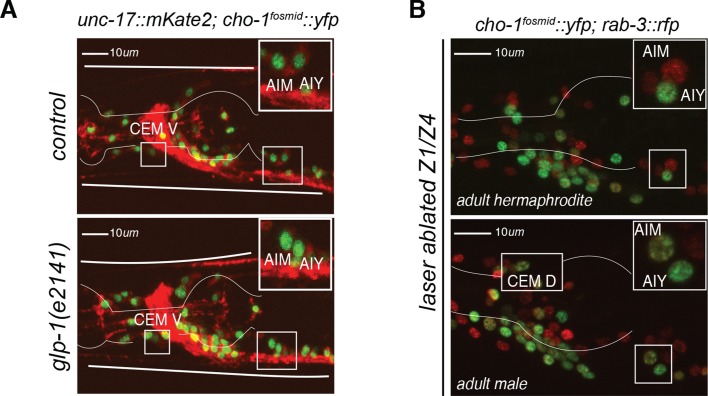Figure 1. Heterochronic pathway effects on AIM and CEM neuronal differentiation during sexual maturation.
(A) A simplified schematic of the heterochronic pathway, deduced from the genetic analysis of hypodermal cell lineage division events. The LIN-28 RNA binding protein prevents the maturation of miRNA let-7. When LIN-28 protein levels go down at the end of the second larval stage (L2), mature miRNA let-7 levels rise and bind to the 3’UTR of let-7 targets. One let-7 target is the RNA-binding protein LIN-41, whose levels are downregulated at the onset of sexual maturation (L4). This allows for its negative regulator, the zinc-finger transcription factor lin-29, to be expressed at the L4 stage to induce the larval to adult transition. Sequence homology alignment of the five Zn-finger domains shows that LIN-29 is an orthologue of human ZNF362 and ZNF384, while EGRH-1 is an orthologue of human EGR. The Zn fingers of worm, fly and human are shown. Zn coordinating Cys and His residues are colored in blue and DNA-contacting residues (at position −1,+2,+3 and+6 of the helixes preceding the His residues) are colored in red. Conservation is indicated in grey shading. (B) AIM neuronal differentiation is precocious in lin-28(n719lf) and lin-41(bch28lf). unc-17/VACHT (ot907) and cho-1/CHT (otIs534) cholinergic reporter expression (cytoplasmic for unc-17 and nuclear for cho-1) is not observed in AIM in control animals at the L3 stage (dotted circles, top panels). lin-28(n719lf) and lin-41(bch28lf) mutant males show precocious cholinergic gene expression in AIM at the L3 stage (top panels). eat-4/VGLUT (otIs388) glutamatergic reporter expression is observed in AIM in control animals at the L3 stage (circled in white, bottom panels). lin-28(n719lf) and lin-41(bch28lf) mutant males show precocious loss of AIM glutamatergic identity (dotted circles, bottom panels). The AIY cholinergic neuron is located next to AIM and is used as a positional reference. Solid circles indicate expression of the reporter, stippled circle indicates loss of expression. (C) Male-specific AIM differentiation is blocked in let-7(n2853ts), lin-41(xe8gf) and lin-29a/b(n333lf) mutants. unc-17/VACHT (ot907) and cho-1/CHT (otIs354) cholinergic reporter expression (cytoplasmic for unc-17 and nuclear for cho-1) is observed in young adult (YA) control males but not in AIM neurons in hermaphrodites nor let-7(n2853ts), lin-41(xe8gf) and lin-29a/b(n333lf) mutant males (dotted circles, top panels). eat-4/VGLUT (otIs388) glutamatergic reporter expression is observed in hermaphrodites and in let-7(n2853ts), lin-41(xe8gf) and lin-29a/b(n333lf) mutant males, where it fails to be downregulated (circled in white, bottom panels). L1 let-7(n2853ts) animals were shifted to the restrictive temperature (25°C) and imaged after 48hs. The incomplete penetrance of the let-7 mutants is likely because the allele used, n2853, a point mutation in the miRNA seed region, is hypomorphic. The AIY cholinergic neuron is located next to AIM and is used as a positional reference. (D) Quantification for the AIM neurotransmitter switch in heterochronic mutants lin-28(n719lf), lin-41(bch28lf), let-7(n2853ts), lin-41(xe8gf), lin-29a/b(n333lf) and mab-10(xe44) (n = 15). Expression of unc-17/VACHT (ot907) and eat-4/VGLUT (otIs388) was quantified as ON or OFF. (E) CEM neuronal differentiation defects in heterochronic mutants. CEM cholinergic gene expression is precocious in lin-28(n719lf) and lin-41(bch28lf) males compared to control. unc-17/VACHT (ot907) and cho-1/CHT (otIs354) cholinergic reporter expression is not observed in CEM neurons in wild-type males at the L3 stage (dotted circle). lin-28(n719lf) and lin-41(bch28lf) males show precocious cholinergic gene expression in CEM neurons at the L3 stage (circled in white, top panels). CEM cholinergic gene expression is lost in let-7(n2853ts) and lin-41(xe8gf) mutants (dotted circles). lin-29a/b(n333lf) mutants showed no defect in cholinergic gene expression in CEM neurons (circled in white). L1 let-7(n2853ts) animals were shifted to the restrictive temperature (25°C) and imaged after 48hs. The incomplete penetrance of the let-7 mutants is likely because the allele used, n2853, a point mutation in the miRNA seed region, is hypomorphic. (F) Quantification for CEM cholinergic gene expression in heterochronic mutants lin-28(n719lf), lin-41(bch28lf), let-7(n2853ts), lin-41(xe8gf), lin-29a/b(n333lf) and mab-10(xe44) (n = 15). Expression of unc-17/VACHT (ot907) was quantified as ON or OFF.



